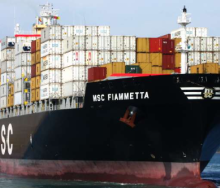The Absa Purchasing Managers’ Index (PMI), compiled by the Bureau for Economic Research (BER) and sponsored by Absa, increased to 52.8 points in September, up from 43.6 in August 2024, which means it is back in expansionary territory following a decline in August.
The survey asked respondents to compare conditions to the previous month.
The PMI (and official manufacturing data) has been volatile in recent months, but it is useful to note that September takes the average PMI for 2024Q3 to 49.6 points, just below the 50-point mark. This follows average PMIs of 47.9 for Q2 and 48.2 for Q1, according to this latest survey.
“This is a positive sign for the sector. Even more encouraging is that the index tracking expected business conditions in six months’ time increased to 70.8 points in September from 61.3 in August. This is the highest index since January 2021 (71.3), indicating strong optimism about improving business conditions,” the researchers say.
The business activity index increased by 11.8 points to 50.7 in September. In line, new sales orders increased by 18.5 to 53.1 points in September.
Both domestic and export demand showed signs of improvement, with exports back on the expansionary side, like in July, and increasing for a third month in 2024.
On the local consumer front, the recent interest rate cut adds to the expectation of a possible more positive demand story.
The index measuring supplier performance decreased by 2.5 points, indicating an improvement (as this index is inversed). This could, encouragingly, mean that even with the big jump in activity and sales orders, suppliers are adjusting and coping with the increase, the survey points out.
The latest official data shows that producer price inflation for final manufactured products edged down to 2.8% year-on-year in August, below 3% for the first time in four years.
The PMI survey is positive for the inflation outlook, with the purchasing price index decreasing to 61 points. This is the lowest reading for the year and since March 2018 (60.7). With a relatively stronger currency and declining crude oil prices, fuel price cuts in September supported the softening of production costs.













